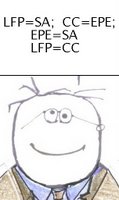Investigação genética
Last week,
the White House decreed
that human germline gene editing in biomedical research is
discontinued in the USA until ethical and safety concerns are resolved. This
technology involves modification of the genome in germ cells, which can then be
inherited and passed on to future generations. “The administration believes
that altering the human germline for clinical purposes is a line that should
not be crossed at this time”, said John P Holdren, Director of the White House
Office of Science and Technology Policy.
In recent
years, genome engineering technology has developed the ability to edit DNA more
precisely than before. The new technology is based on an enzyme complex that
binds and splices DNA at precise locations, and can target a dysfunctional gene
by first deleting, then repairing or replacing the target sequence with another
molecule. One such technique, CRISPR/Cas—short for clustered regularly
interspaced short palindromic repeats—has received attention after a study
from China used the technique for the first time to edit nonviable
human embryos to disable the gene for β-thalassaemia. However, the study did
not go to plan. The procedure worked only in a fraction of embryos, and,
worryingly, mutations were introduced into other parts of the genome. Mosaics in
which the embryo only had the desired change in some of its cells were also
created. Clearly, the technology is still in its infancy and has many hurdles
to overcome before it can be used clinically.
Nevertheless,
the study caused a public outcry and has divided scientists worldwide. Those
supporting CRISPR germline engineering believe the technology could prevent
severe genetic diseases, but that research in viable embryos should be
postponed. Those against CRISPR germline engineering cite the unquantifiable
safety issues and ethical minefield of imposing unpredictable effects on future
generations who cannot provide consent. There is also no compelling medical use
for this technology at present, since other approaches exist to prevent genetic
diseases, for example, embryo screening. Concerns that this technology would
represent eugenics (enhancing the genome to create desirable traits rather than
preventing disease) have also been raised. But whether for or against, there is
agreement on the need to have an open debate on the pros and cons of this
technology. A similar situation arose on the safety of mitochondrial donation,
which was approved in the UK earlier this year. Arguably a less invasive
approach than germline editing, this method is likely to involve some risk but
was felt to be justified by the gravity of the mitochondrial diseases it could
prevent, which are otherwise difficult or impossible to treat.
A welcome response
has come from the US National Academy of
Sciences and National Academy of Medicine, who are launching an initiative to
formulate guidelines on human gene-editing research that will serve
researchers, clinicians, policy makers, and the public, in the USA and
globally. Researchers and other experts will convene at an international summit
later this year, to weigh up the benefits and risks, and ethics and safety
concerns around this research, as well as to explore the potential of
alternative approaches that do not alter the germline.
Putting
contentious technologies aside, this week's Lancet features two studies into
how applications of genomic research can improve patient outcomes by helping to
predict treatment responses in individuals. Jessica L Mega and colleagues use a
genetic risk score to identify individuals at risk of incident and recurrent
coronary heart disease, and report that higher-risk groups have a greater
benefit from statin therapy. In another paper, Mega and coworkers report the
largest ever study of warfarin pharmacogenetics undertaken as part of the
ENGAGE AF-TIMI 48 trial, comparing warfarin with edoxaban as an anticoagulant.
Patients were classified by genotyping. Those who were sensitive and highly
sensitive responders were at higher risk of bleeding with warfarin than were
normal responders and had lower bleeding rates with edoxaban compared with
warfarin, making edoxaban the preferred treatment.
As the
precision medicine movement gathers pace, advances in genome sequencing,
analysis, and engineering will need to continue. Huge amounts of new genetic
information will become available through initiatives such as the UK's 100 000 Genomes Project, which will
provide comprehensive genomic information for NHS patients by 2017—with the aim of delivering an ethical and
transparent genomic medicine service for the NHS. Yet careful progress and
debate, bringing in all stakeholders, will be needed to craft appropriate use
of genomic information in the evolving landscape of clinical practice, and to
set appropriate boundaries for high-risk, high-reward methods for genome
engineering.
The Lancet,
06 June 2015
Etiquetas: Medicina

































